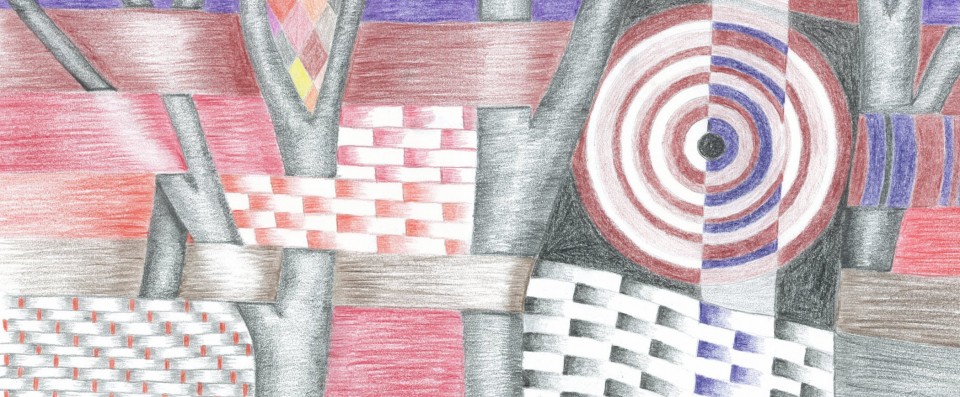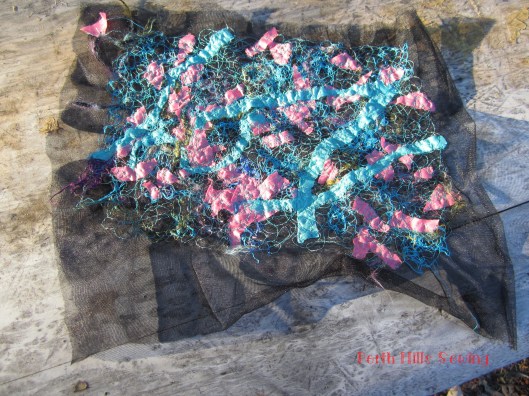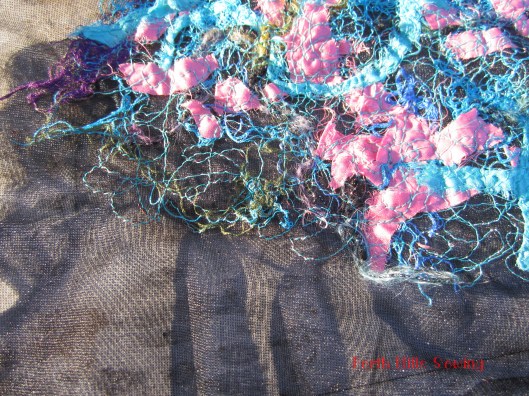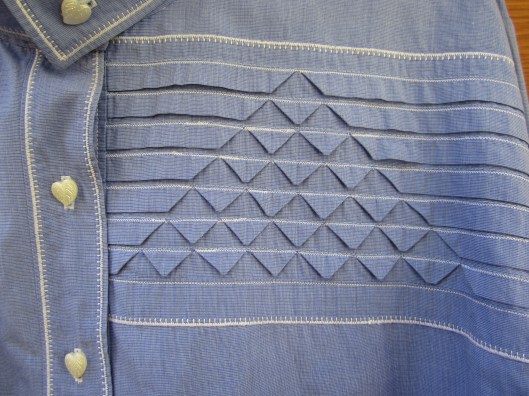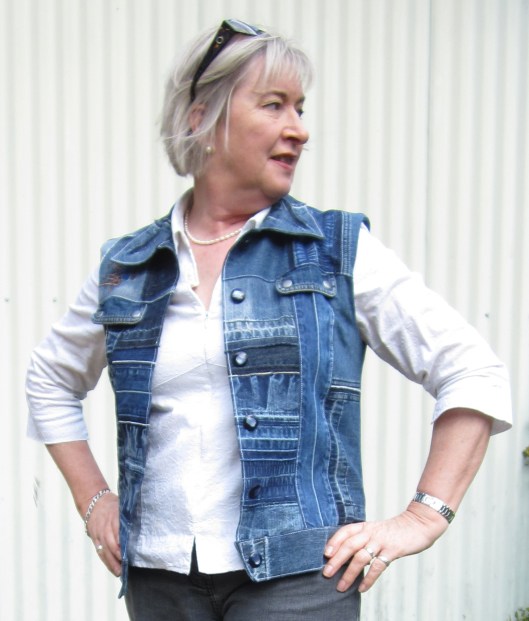Yesterday I went to a meeting of the WearTo? Group of the WA Embroiderers’ Guild, and tried my hand at making beads from fabric. I’ve seen this done before, and the results can be fantastic, mine have a little way to go! The idea is to embellish small strips of fabric with either hand or machine embroidery, then glue them on to strips of felt which are then rolled up to form tube beads. I started with some small odd shaped scraps and stitched them together crazy patchwork fashion first, then did some embroidery. That was as far as I got, I need to get some felt, and possibly figure out how to make the beads without glue, when I try to glue things I’m generally not very successful. All in all a fun day, and very different from the useful and rather mundane shopping bags I have been making lately.
I got to thinking on the drive home about creativity as therapy. The others in the group are all ordinary people, with the difficulties and challenges that we all face, but it seems that we all put those things aside for a few hours to focus on being creative, and taking some time for ourselves. As a result, there is lots of positive energy in the room, and that can’t be a bad thing.
I have to admit that what I’m going to say now can be applied to other creative arts, painting, knitting, woodwork, making music or model aeroplanes, but sewing is my thing so that’s what I focus on.
I believe sewing can be therapy, and it seems plenty of other people feel the same. Sewing and other creative pursuits have been shown to reduce stress, increase positive feelings, improve immune function, and even to protect the brain from diseases like Parkinson’s and dementia. When you are absorbed in creating something there is less room in your consciousness for negative or depressing thoughts. When you learn how to do something new you improve communication between different parts of the brain and may also improve the function of your memory. When you succeed in creating something you receive a boost to your self-esteem. When you wear something you have made and somebody compliments you on it the boost is even bigger. When you make something beautiful for yourself you are nurturing yourself, and we can all use some nurturing. When you make something beautiful for somebody else you are nurturing them and strengthening your relationship.
I don’t need to go on, do I?! Sewing is a great hobby (which is not to say that it’s better than any other creative hobby), but I and so many other people I know get wonderful satisfaction out of being creative and making something from fabric and thread. What are your thoughts?
